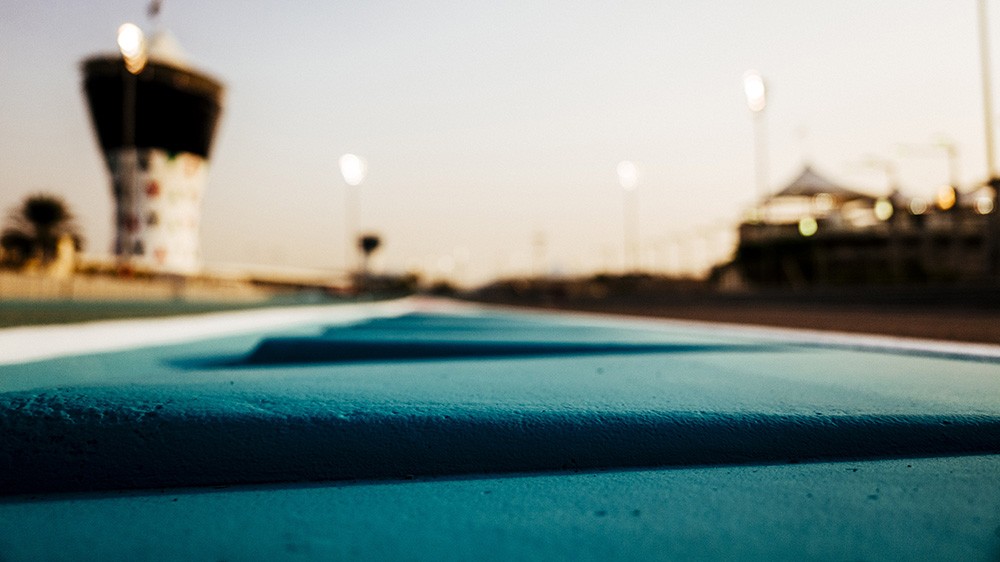
Qui una volta c’erano tribù del deserto, pirati, pescatori di perle, dromedari e commercianti di datteri. Oggi abbiamo grattacieli, centri commerciali, un reddito pro-capite fra i più alti al mondo – nonostante le fluttuazioni nel prezzo del petrolio – e, naturalmente, Yas Marina. Abu Dhabi è uno dei sette Emirati Arabi e il circuito prende il nome dall’isola – artificiale – su cui sorge.
Cinque chilometri e mezzo, ventuno curve, la metà delle quali concentrate nell’ultimo settore, che ha per sfondo lo spettacolare hotel Viceroy, impreziosito, quando cala l’oscurità, da un’illuminazione cangiante. Il Gran Premio è in calendario dal 2009 e gli organizzatori hanno insistito – e pagato – perché fosse l’ultimo della serie (famosa l’edizione 2014, ribattezzata “Abu Double” perché veniva garantito il doppio dei punti, in modo da creare più suspense per la finale di campionato).
Come molte realizzazioni dell’architetto Hermann Tilke, il senso di marcia è antiorario e l’uscita dai box a dir poco creativa. Il fatto che l’attività sia spostata verso le ore serali fa sì che la prima sessione del venerdì, in pieno pomeriggio, si svolga in condizioni di pista totalmente diverse dal resto del weekend. Un elemento di cui piloti e ingegneri tengono conto nella scelta degli assetti. Per il resto, il tracciato non favorisce i sorpassi, anche se ci sono due forti staccate alla fine dei rettilinei principali. Le mescole di pneumatici per questa edizione saranno le più morbide della gamma (per i piloti della Ferrari sono pronti dieci set di Ultra Soft, due di Super Soft e uno solo di Soft). Domenica sera si faranno le valigie, ma non per tutti: la settimana successiva ci sono due giorni di test di gomme. Il primo passo nella prossima stagione…
ENGLISH VERSION
Once upon a time, this place was home to desert tribes, pirates, pearl fishers, dromedaries and date sellers. Today, we find skyscrapers, shopping malls, one of the highest incomes per capita in the world – even with the fluctuating price of oil – and, naturally, Yas Marina. Abu Dhabi is one of seven Arab Emirates and the circuit takes it’s name from the island – an artificial one – on which it is built.
It is five and a half kilometres in length and boasts 21 corners, half of them crammed into the final sector, which is set against the backdrop of the spectacular Viceroy hotel. At night, it’s even more impressive thanks to its iridescent lighting. The Grand Prix has been on the calendar since 2009 and the organisers insisted on and indeed paid for having it run as the last round of the championship. Indeed, the 2014 edition, “Abu Double” if you will, was famous for being run for double points, with the idea of creating more suspense for the season finale.
Like many of Hermann Tilke’s creations, the track runs anti-clockwise and the pit lane exit is pretty unusual. The fact that most of the F1 action takes place in the evening means that the first Friday session, held in the afternoon, runs in completely different conditions to the rest of the weekend. Drivers and engineers have to take this into account when it comes to deciding on car set-up. The track is not particularly conducive to overtaking, even though there are two heavy braking points at the ends of the main straights. The tyre compounds for this race will be the softest in the range, with the Ferrari drivers banking on 10 sets of Ultra Soft, two of Super Soft and just one of Soft. On Sunday night it will be time to pack the suitcases, but not for everyone, as the following week sees two days of tyre testing. It’s the first step towards next season…